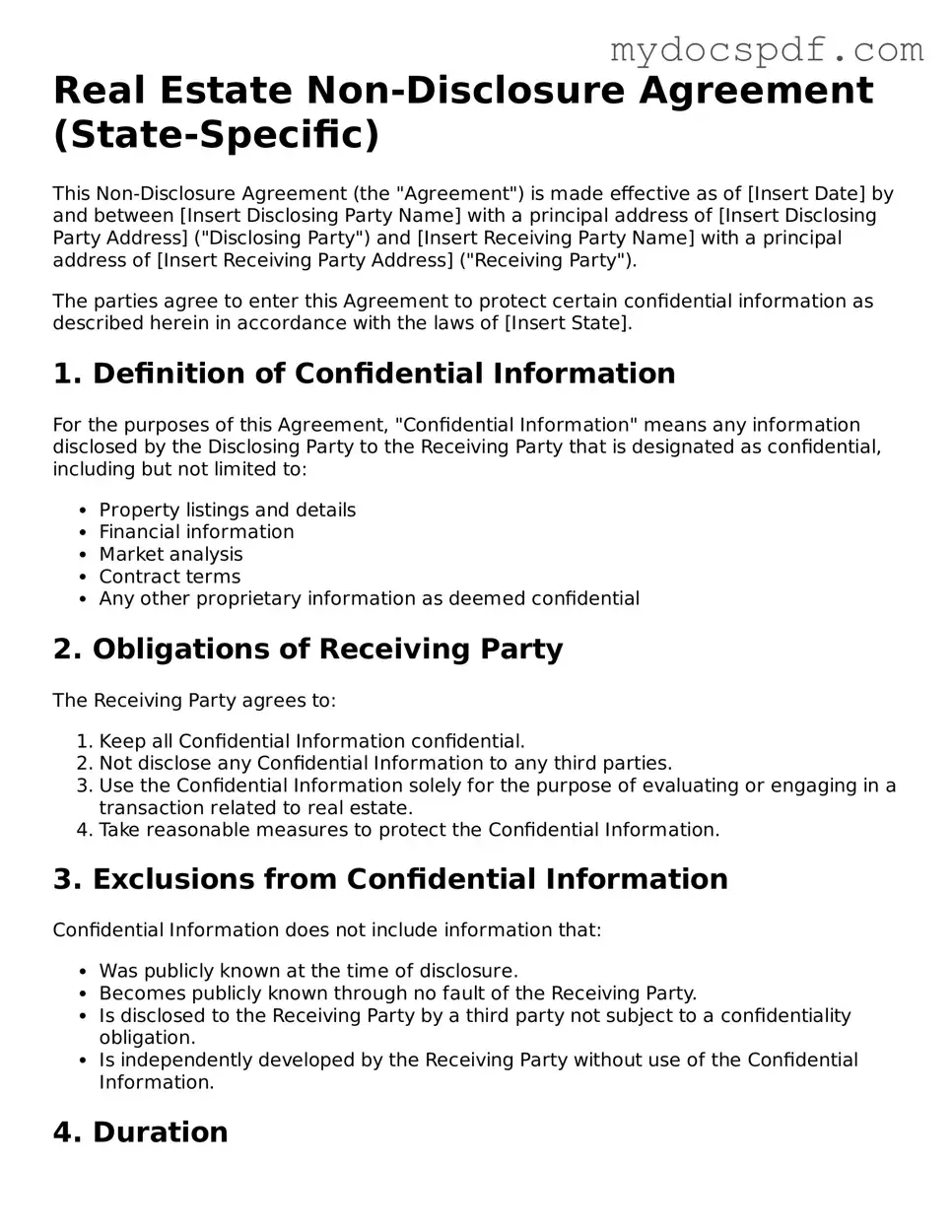Real Estate Non-Disclosure Agreement (State-Specific)
This Non-Disclosure Agreement (the "Agreement") is made effective as of [Insert Date] by and between [Insert Disclosing Party Name] with a principal address of [Insert Disclosing Party Address] ("Disclosing Party") and [Insert Receiving Party Name] with a principal address of [Insert Receiving Party Address] ("Receiving Party").
The parties agree to enter this Agreement to protect certain confidential information as described herein in accordance with the laws of [Insert State].
1. Definition of Confidential Information
For the purposes of this Agreement, "Confidential Information" means any information disclosed by the Disclosing Party to the Receiving Party that is designated as confidential, including but not limited to:
- Property listings and details
- Financial information
- Market analysis
- Contract terms
- Any other proprietary information as deemed confidential
2. Obligations of Receiving Party
The Receiving Party agrees to:
- Keep all Confidential Information confidential.
- Not disclose any Confidential Information to any third parties.
- Use the Confidential Information solely for the purpose of evaluating or engaging in a transaction related to real estate.
- Take reasonable measures to protect the Confidential Information.
3. Exclusions from Confidential Information
Confidential Information does not include information that:
- Was publicly known at the time of disclosure.
- Becomes publicly known through no fault of the Receiving Party.
- Is disclosed to the Receiving Party by a third party not subject to a confidentiality obligation.
- Is independently developed by the Receiving Party without use of the Confidential Information.
4. Duration
This Agreement shall last for [Insert Duration, e.g., "two years"] from the date of disclosure of the Confidential Information.
5. Return or Destruction of Confidential Information
Upon termination of this Agreement, the Receiving Party agrees to return or destroy all materials and documents containing Confidential Information in their possession.
6. Governing Law
This Agreement shall be governed by and construed in accordance with the laws of the State of [Insert State].
7. Acceptance
By signing below, both parties acknowledge that they have read, understood, and agreed to the terms of this Non-Disclosure Agreement.
Disclosing Party: ______________________________________
Signature: ____________________________________________
Date: _________________________________________________
Receiving Party: ______________________________________
Signature: ____________________________________________
Date: _________________________________________________
